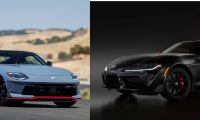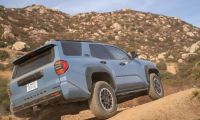Should car enthusiasts who are diehard ICE fans worry about the U.S. becoming a "nothing-but-EV" automotive world in the near future?
Probably not and here's why
Everything You Need to Know About Lithium-Ion Batteries
According to an issue of The Economist this year titled “The Race to Build a Superbattery,” Americans reportedly want 3 things in their electric car:
- Relief from any range anxiety by providing more mileage per charge in an EV battery.
- Short charging times because we are all in a hurry.
- A price that is the same or less than what you pay and get, with an equivalent vehicle powered by an internal combustion engine.
At the heart of these desires, however, is the problem of building not just a better---but a far better battery---a “Superbattery” if you will.
In the article, The Economist discussed efforts to solve all three “wants” by engineers working on:
- Tweaks that will improve the traditional Li-ion battery
- Creating an in-between version of Li-ion and solid-state with a semi-solid “condensed” EV Battery.
- The potential of a QuantumScape battery, that “… should be good for at least 800 cycles (i.e., possess the ability to charge and discharge repeatedly before the battery’s capacity degrades to below 90%) that would, “…give an EV a lifetime range of some 400,000km.”
Today, the said “Superbattery race” is still on and from what we’ve observed thus far is that the traditional Li-ion battery is still in the race and the tech is being refined to make it even better. But is it enough?
Li-Ion Tech Today
To help car enthusiasts stay abreast of the latest Li-ion technology, a recent Engineering Explained YouTube channel episode takes a deep dive into the technology and how it is transforming today’s cars.
In the video the host explains:
- What is a lithium-ion battery?
- How does a lithium-ion battery work?
- How is a lithium-ion battery made?
The meat of this well-presented discussion is that it explains what this means toward battery longevity and why charging rates change as a battery approaches full charge---two important parts toward creating a future “Superbattery.”
Here is the video that is a good update and reminder of Li-Ion tech:
Everything You Need to Know About Lithium-Ion Batteries
How Much Longer Will ICE Vehicles Be Around?
Recent estimates put hybrids at just 7% of U.S. sales this year, pure electrics about 9%, and internal combustion engine (ICE) vehicles taking more than the lions’ share at 80%.
However, this is predicted to change in the next few years…but not in the shape of a totally electric automotive world. Not only are Li-ion EV battery limitations regarding range and cost a problem, but the infrastructure is realistically nowhere near what could support an EV-only U.S.
And smart consumers realize this. Which is just one reason why Hybrids are the closest future we will see anytime soon.
According to a recent Reuters news report:
"Hybrids really serve a lot of America," said Tim Ghriskey, senior portfolio strategist at New York-based investment manager Ingalls & Snyder. "Hybrid is a great alternative to a pure electric vehicle (and) it's an easier sell to a lot of customers."
Interest in hybrids is rebounding as consumer demand for pure electrics has not accelerated as quickly as expected. Surveys cite a variety of reasons for tepid EV demand, from high initial cost and concerns about range to lengthy charging times and a shortage of public charging stations.
“With the tightening of emissions requirements, hybrids provide a cleaner fleet without requiring buyers to take the leap into pure electrics,” said Sam Fiorani, vice president at AutoForecast Solutions.
S&P Global Mobility estimates hybrids will more than triple over the next five years, accounting for 24% of U.S. new vehicle sales in 2028. Sales of pure electrics will claim about 37%, leaving combustion vehicles — including so-called “mild” hybrids — with a nearly 40% share.
In other words, Lithium is not Kryptonite and todays’ ICE owners and enthusiasts have little to worry about regarding the over-marketing of EVs and what it means to them. It will come…but gradually…and we really have bigger problems to focus on in this world right now.
See Related Article: “EV Owners are Causing an Obesity Epidemic”
For additional articles related to EV batteries, here are two for your consideration:
- Hydrogen Fuel Versus Lithium Ion Versus Solid State Batteries in Cars
- From Lithium Mine to Tesla Battery Line
Timothy Boyer is an automotive reporter based in Cincinnati. Experienced with early car restorations, he regularly restores older vehicles with engine modifications for improved performance. Follow Tim on “Zen and the Art of DIY Car Repair” website, the Zen Mechanic blog and on Twitter at @TimBoyerWrites and Facebook for daily news and topics related to new and used cars and trucks.
COMING UP NEXT: Tesla's Battery Evolution Comparing the 4680 and 2170 Cell
Image source: Deposit Photos












